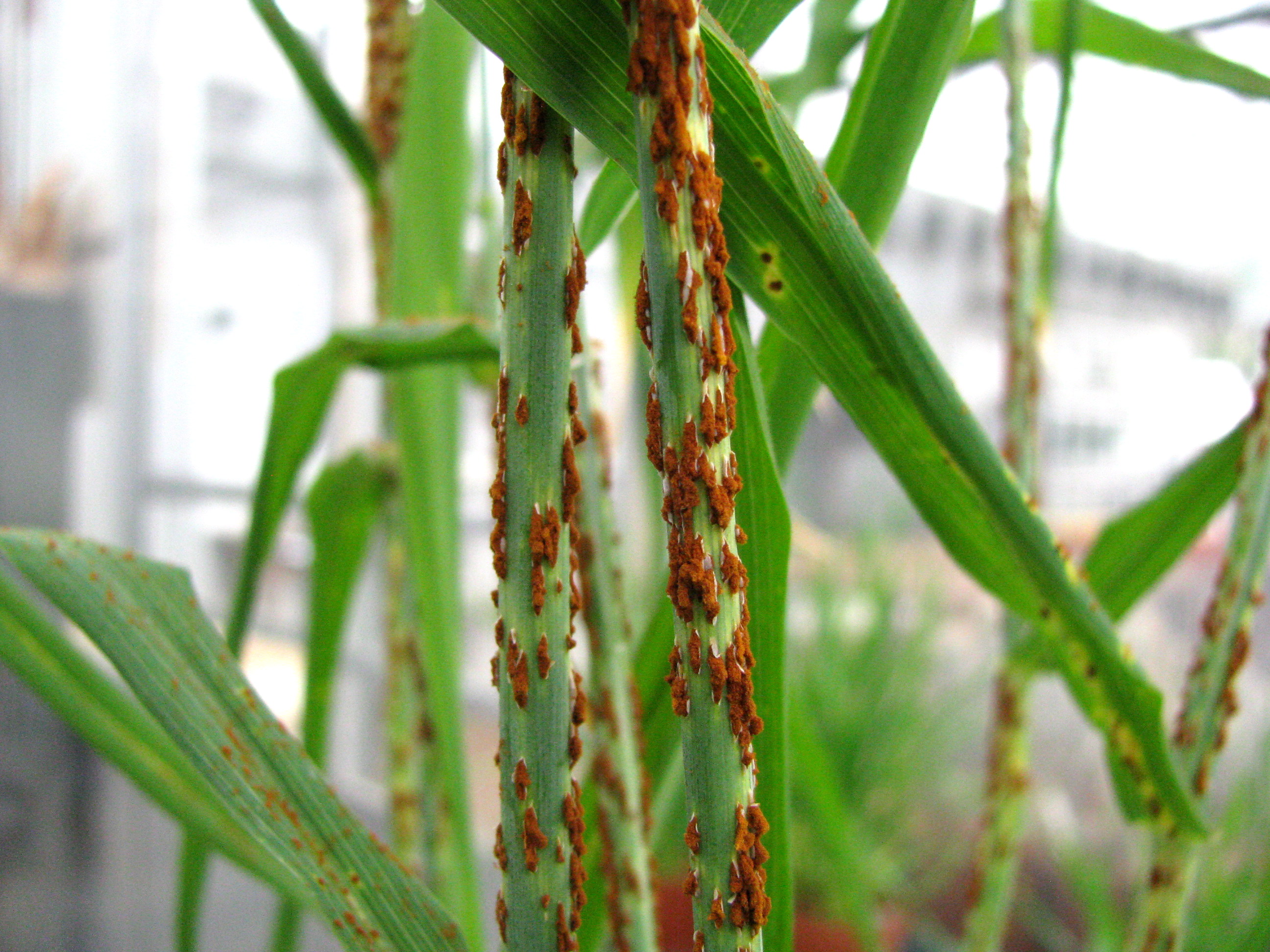
We’ve made a breakthrough in hunt for origins of a cereal killer. Image credit: Dr Zacharias Pretorius
A deadly threat on the loose. An international team of experts. A 20-year-old mystery. It’s got all the ingredients of the latest true crime podcast. But it’s actually a mission to uncover the origins of the world’s deadliest strain of cereal rust disease.
The crime: killing crops and threatening global food security
Rusts are a common fungal disease of plants. Globally they kill over $1 billion worth of crops each year.
To date, Australian crops have had a bodyguard in the form of breeding rust-resistant crop varieties. But with a new killer at large, the threat of chaos loomed. This cereal killer was getting past all the best defences in other countries.
Luckily, we had some great detectives on the case. Our researchers worked with partners in the US and South Africa to crack this one open.
The suspect: Ug99 cereal rust
The Ug99 strain of the wheat rust fungus is a serious villain. Like all classic bad guys, it came from bad stock. Its parents were also rust strains creating this new hybrid.
It was first named in Uganda in 1999, hence ‘Ug99’. And it is considered one of the most threatening of all rusts.
So far outbreaks have been restricted to Africa and the Middle East. But we estimate that an outbreak here in Australia could cost up to $500 million in lost production and fungicide use in the first year.
But as our crop crime fighters tell us: the more you know your enemy, the more equipped you are to fight against it.
Catching the killer: all in the genes
Our super sleuths found half of Ug99’s genetic material came from a strain that has been in southern Africa for more than 100 years. And it also occurs in Australia.
Earlier this year, just like a detective scouring the DNA database, Dr Melania Figueroa and her team were sequencing the DNA of Ug99. At the time, Melania was working with the University of Minnesota. Meanwhile, over in Australia, a CSIRO team led by Dr Peter Dodds was sequencing another type of rust fungus called Pgt21.
When the two groups compared results, they found the two pathogens share an almost identical nucleus and therefore half of their DNA. Bingo! They’re related.
Ug99 is the offspring of two other known assassins. And it wasn’t the usual entry into the world.
The fungi parents merged their cells together and exchanged genetic material without going through the complex sexual reproduction cycle.

Our team of dedicated detectives scientists investigating the cereal rust felon. Dr Narayana Upadhyaya, Dr Rohit Mago, Dr Peter Dodds and Dr Melania Figueroa.
More killers on the loose
Back in the 60s, researchers had theorised that rust strains could hybridise. But this new research provides the first clear molecular evidence. It means Ug99 could again exchange genetic material with different pathogen strains to create a whole new enemy.
Ug99 could also become a master of disguise. But this new intel means researchers can predict how the killer is likely to change in the future. It will also make way for better methods to screen for crop varieties with strong resistance to disease.
Earlier this year, we worked with the University of Minnesota and the 2Blades Foundation to achieve good results in wheat resistance. This was done by stacking five resistance genes into the one wheat plant to combat wheat stem rust.
This latest research is the result of a collaboration between scientists from CSIRO, the University of Minnesota, University of the Free State, and Australian National University.


20th November 2019 at 4:00 pm
Writing these excellent stories highlighting Australian innovations in a form including humour, which can easily be read beyond the scientific community, is a great way to bridge to communication gap, keep it going!
20th November 2019 at 2:32 pm
you are the hope of the side
bravo
researchers r salt of the earth
20th November 2019 at 12:51 pm
I wonder if the talk of bad ‘guys’ and enemies etc. is just humourous banter for marketing the science behind the resistance to diseases out of control… I hope so.
20th November 2019 at 11:17 am
UG99 as it appears to mutate in multiple ways sounds like the Crops Equivalent of HIV-AIDS. This report is a really “Good News Story” so why isn’t reported on ABC-TV, SBS-TV and the Commercial channels instead of the endless Bad News ones?
Congratulations to our “Scientives” at CSIRO and those in Africa, trhe US etc. These sorts of discoveries should get a Nobel Prize!
8th November 2019 at 8:39 pm
Scientific research is the hope for the survival of the human race. I remember there was an infection of
coconut palms in sri lanka and this infestation was killing thousands of coconut palms which was/is one of the sources of income/revenue for the island country until research at the CSIRO in sri lanka came up with a simple
answer: the use of soap suds sprayed stopped the infestation.
I only wish and hope scientific research will find an answer and a cure for cancer.often the cure is something very simple